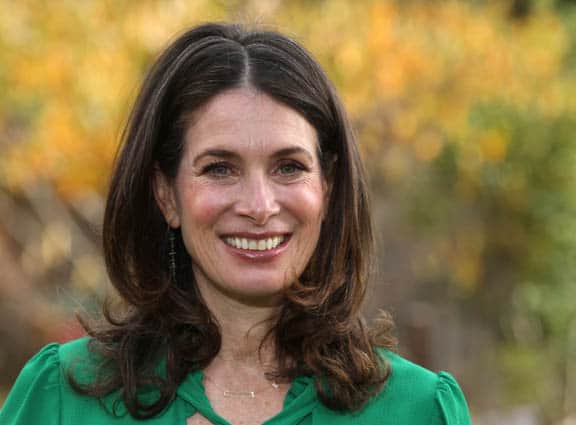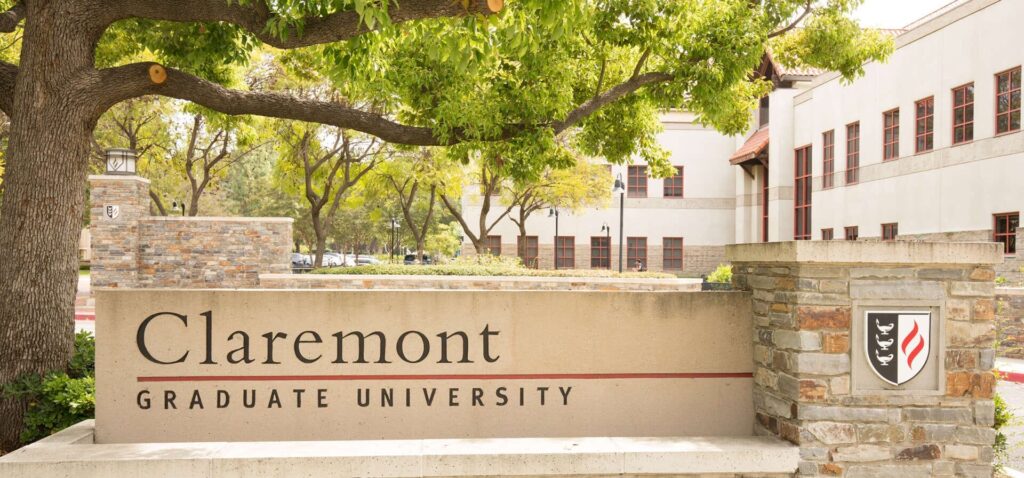2022 Claremont City Council candidate profiles: Jennifer Stark

by Steven Felschundneff | steven@claremont-courier.com
If one word could describe councilmember and candidate Jennifer Stark’s approach to governing it would be “collaboration.”
During a half hour interview, Stark spoke of the city collaborating with regional and state leaders, the council collaborating with the city and, most importantly, residents collaborating with each other to reach our collective goals and make Claremont a better place to live.
Stark was first elected to the council in 2018 in what turned out to be our last election before the city was divided up into voter districts. Now running for reelection, she faces a challenge from Maura Carter in the newly redrawn District 3.
Stark serves as the chair of the Energy, Environment and Natural Resources Committee and vice-chair of the Water Policy Committee, as well as the alternate for the Governing Board for the San Gabriel Valley Council of Governments. She is also Secretary of the Board for the Six Basins Watermaster.
In addition, she is on the board of Claremont Heritage and the Friends of the Claremont Library and is a founder of Claremont Canopy, a nonprofit organization that assists refugees in adjusting to their new communities.
She said it has been “deeply fulfilling” to be on the Claremont City Council, but also recalled a significant learning curve in her first term in gaining experience and building relationships here in Claremont and throughout the region.
“I would really like to take that experience and continue on,” Stark said. “I truly do believe that this seat is one I get to sit in and make better for the person who comes after me. I feel like two terms is really solid, and I would like to put in that next level of service that I think a second term will provide.”
Asked about the top priority on her platform, Stark replied, “The number one priority is the one that is right in front of me. You could have all of these priorities but whatever happens at the time is the number one thing you have to deal with.”
Stark listed several topics as being critically important, including pushing Claremont forward with its sustainability goals, continuing to strengthen its financial position and working to address the polarizing nature of certain issues here in town.
To aid in better communication Stark highlighted the proposed upgraded technology as well as facilitating community engagement opportunities funded through the American Rescue Plan Act.
“We really do, as a city, need to have some more help to talk about nuanced issues. I want to be a consensus builder, but I also really believe in our collective intelligence, so I really do believe we need to set a better table so that people can have the opportunity to learn more about the issues,” Stark said.
Economic development has been a priority for Stark since she was first elected. She cites the structural deficit the city was facing in 2018 and the employee groups that did not have contracts as some of the challenges the current council has overcome. The city now has multiyear contracts with all its employee groups and has police officers association on a different schedule, so when staff negotiates with police, it will be in a different year from the others.
Plus, with the multiyear contracts, the city won’t have to negotiate with the employee groups every year, which will free up time to address other issues, according to Stark.
“It’s just going to help with the overall morale to not have all the groups have to happen in the same year,” Stark said.
Claremont’s unfunded liability to CalPERS has come to the forefront of campaign issues, with District 2 candidate Peter Yao depicting a constantly increasing debt that will require an extreme course of action.
Stark joins a host of other voices questioning that scenario in part because Yao’s calculations do not consider the impact the Public Employees’ Pension Reform Act, which mandates a substantial change to the way annuitants accrue benefits, will have on the city’s liability over time.
“I don’t think our CalPERS unfunded liability should be [calculated] on the back of an envelope and then presented as a perfect solution. I think that is a little hasty,” Stark said. “This real work is done collaboratively by professionals and with real numbers not imaginary numbers and with real timelines.”
Stark and Mayor Jed Leano formed the minority voting yes for the easement across Larkin Park to accommodate the construction of Larkin Place, the permanent supportive housing project next door.
“I voted for the easement at Larkin Park because I voted to approve funding for the design that required that easement,” Stark said.
She mentioned the concrete block wall which separates the park from the development as being five feet into public property, but because it has been that way for a long time, by law the developer gets that land.
An easement would have knocked that wall down and given three hundred square feet of parking lot back to the city. Improvements to the park would have included creating a turnaround, resurfacing, underground electric wires and making the parking slips wider and safer, according to Stark, who said the application was entirely consistent with the city’s general plan.
“This land was zoned institutional residential in the fourth housing element, so if I could turn back time, I would have had a strategic communication strategy to let everybody know what that zoning meant and what other zoning overlays mean,” Stark said.
Larkin Place isn’t the first and won’t be the last housing development facing significant public pushback.
“There are other pieces of property that we need to talk about. The golf course is one of them. What I would really like to see in the future is a much more collaborative effort with the colleges and the school district to work together with the community to come to terms with some of the realities,” she said.
Critics of other big developments in town, like South Village, have said time and again that dense multistory buildings are changing the small town feel of Claremont and bringing in more people, which puts a strain on resources. Stark believes it’s entirely possible to retain Claremont’s charm while creating more types of housing, including those with high density.
She cites as an example that walking around the Colleges one does not get an urban vibe, even though many of the dorms are multistory, high-density structures. Stark would like to see Claremont build more housing for the “missing middle,” those people who are well paid and do not qualify for subsidized housing, but still can’t afford a home in Claremont. Transit oriented developments, such as those proposed under the Village South Specific Plan, could offer opportunities to these people.
“We have the possibility to keep on making space for people and not destroy what makes Claremont unique and special. And by building carefully and intentionally and with the highest quality architects and design I think we can build for the people we aren’t building for now,” Stark said
Regarding the crime issues around the 10 Freeway and Indian Hill Boulevard, Stark says she hates “that there is a feeling that the residents who live south of the 10 matter less than residents who don’t.”
Addressing the issues of the crime that is happening around the 10 Freeway corridor is not going to be an easy fix. It is going to require a lot of work and rehabilitation and that is going to take time and take money, according to Stark. She envisions that Claremont’s proposed nuisance ordinance could be expanded into a regional model that would cover the entire 10 corridor and combat human trafficking beyond Claremont.










0 Comments